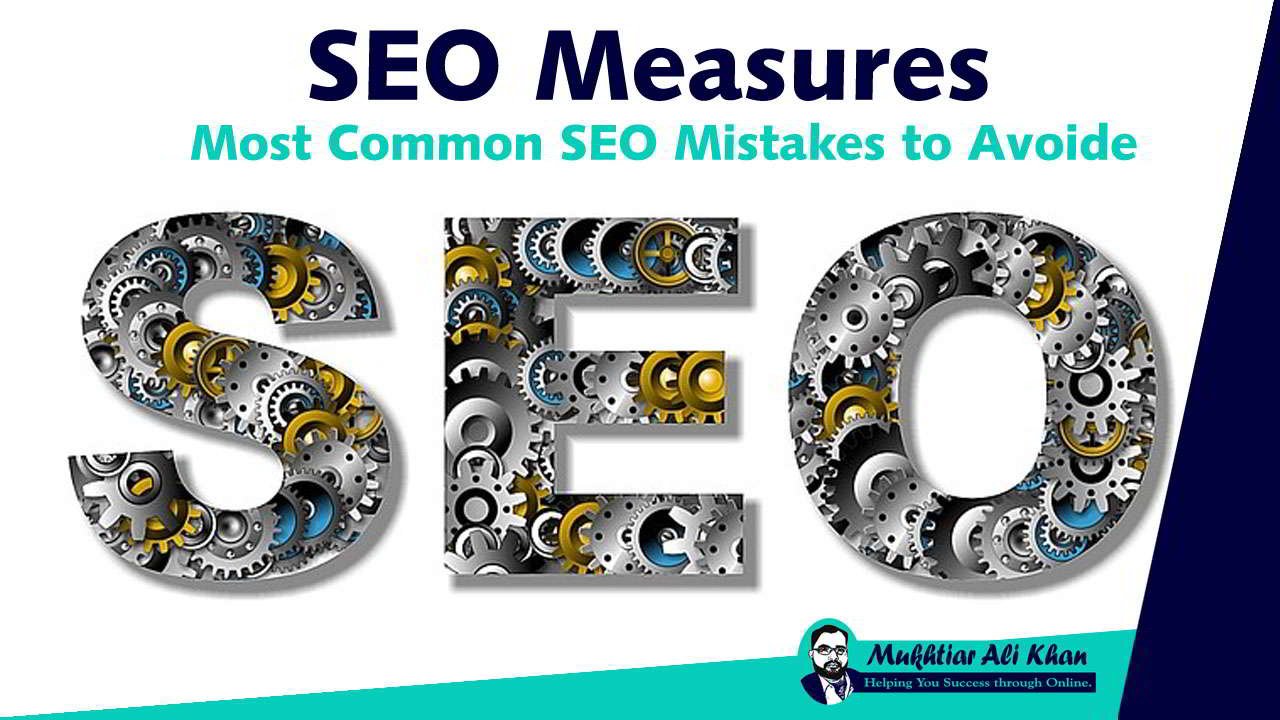Today we are telling you the most common SEO mistakes to avoid. There are good and bad SEO measures. While the former strategies will strengthen your website and improve your ranking, the latter measures can seriously harm your ranking. For some SEO measures, one could almost think that webmasters would ask Google to punish their websites – or worse, to remove them completely from the INDEX.
I am sure that you probably think now: “That does not apply to me! Based on which SEO measures should my websites be punished? “
And yet I keep seeing webmasters complaining in search engine optimization forums that their websites have been removed from the INDEX by Google and are no longer visible to anyone. Many have no idea why it got them so bad. And, of course, they claim to have done nothing wrong, and they are completely at a loss as to why their website is no longer listed on Google.
So many website operators put all their passion and heart into their project, maybe even a very good ranking – and then comes the angry awakening: they can no longer find their website in the search results. Welcome to reality.
The purpose of this lesson is simple: I want to show you a few things that you should not do while optimizing your website. Before reading this post watch the below video in which I mention the Best SEO Strategies that you cannot afford to miss
SEO Basics: So you notice that your website has been banned.
In the first step, check to see if your site is listed or banned by Google.
- Go to Google and enter your entire URL in the Google search bar.

If you check your URL, you should get all indexed pages listed. In any case, now should not come to the error that Google does not find the URL (anymore) in the Google database.
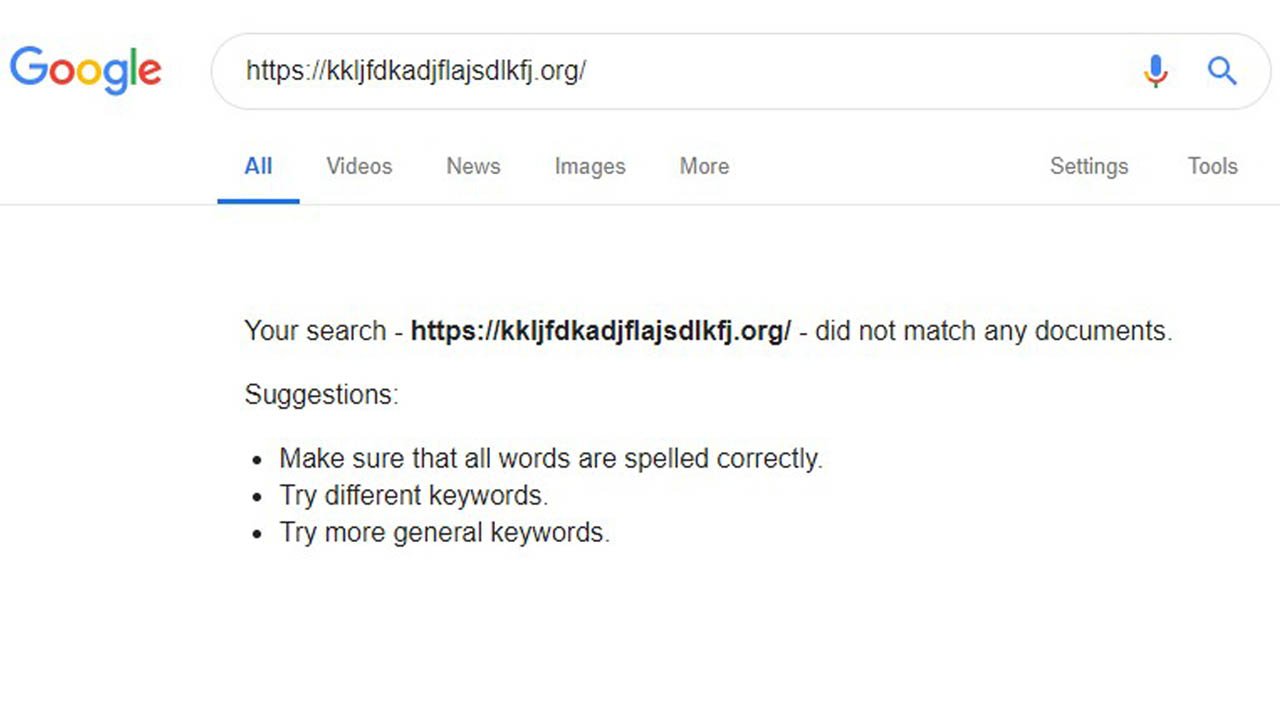
Note: If you enter a brand new website on Google, you will always receive this message until the website has been indexed. This can take a few days.
- Google Search Console
Another way to quickly see if a website has been banned is through Google’s Search Console. Here you can see all the indexed pages. If you have not yet set up a Google Webmaster Tools account, this would be a good time to catch up.
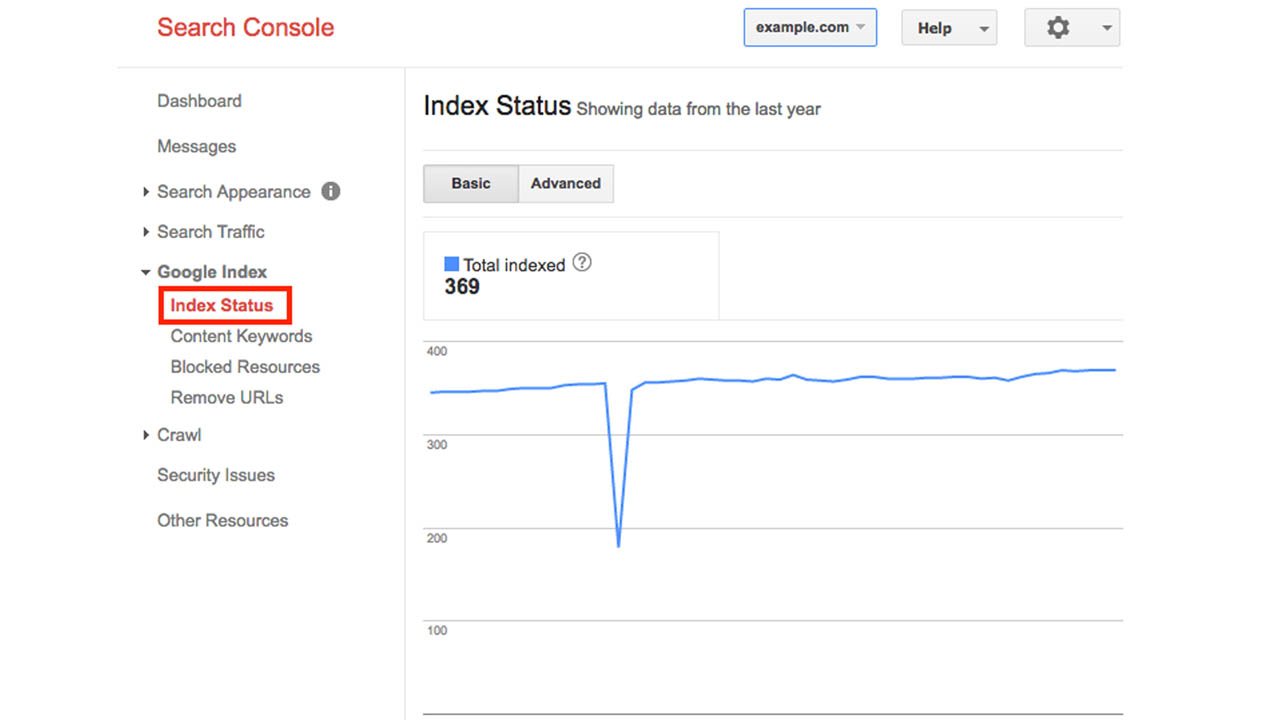
Okay, now we know how and where to see if our website has been banned.
Checklist of SEO Mistakes to Avoid!
There are many SEO mistakes to avoid (on-page) and of the site (off-page) that may cause Google to ban a website. First of all, let’s focus on the OnPage measures that we use to send our website to Nirvana.
Before we start, one more clue: Many of the aforementioned SEO measures were once popular and are still used today. There are also isolated cases, which still achieve short-term success with one or the other technique. The problem is that this does not reduce the risk of being punished with such SEO measures sooner or later.
A look behind the scenes often shows that some SEO specialists use these practices for short-term success and consciously accept to harm the domain in the long term.
In this respect, everyone has to assess the risk for themselves. But in my opinion, it’s better to focus on proper SEO work rather than die a heroic death like a mayfly.
Okay, let’s start with the biggest mistakes …
Read Also: How to Avoid 10 Common SEO Mistakes
White eagle on a white background
Hidden text used to be popular. In principle, simply “white” text with keywords is written on a “white background”. In this way, visitors can not see the annoying text when they visit a website. Webmasters often use this SEO trick to spread their keywords throughout their websites.
This absurd approach, you should avoid. Because search engines see the hidden text … and also know that here the color of the font has no contrast to the background.
At first glance, you’ll probably wonder where the hidden text is …
Just go to the desired website and mark the entire page content. (ctrl / cmd + a), This highlights the whole website in blue. Now we can see the hidden text on the website.
Alternatively, right-click to open the “Page source text” menu. Again, you will quickly find the hidden texts and see the same color coding – just as Google sees this.
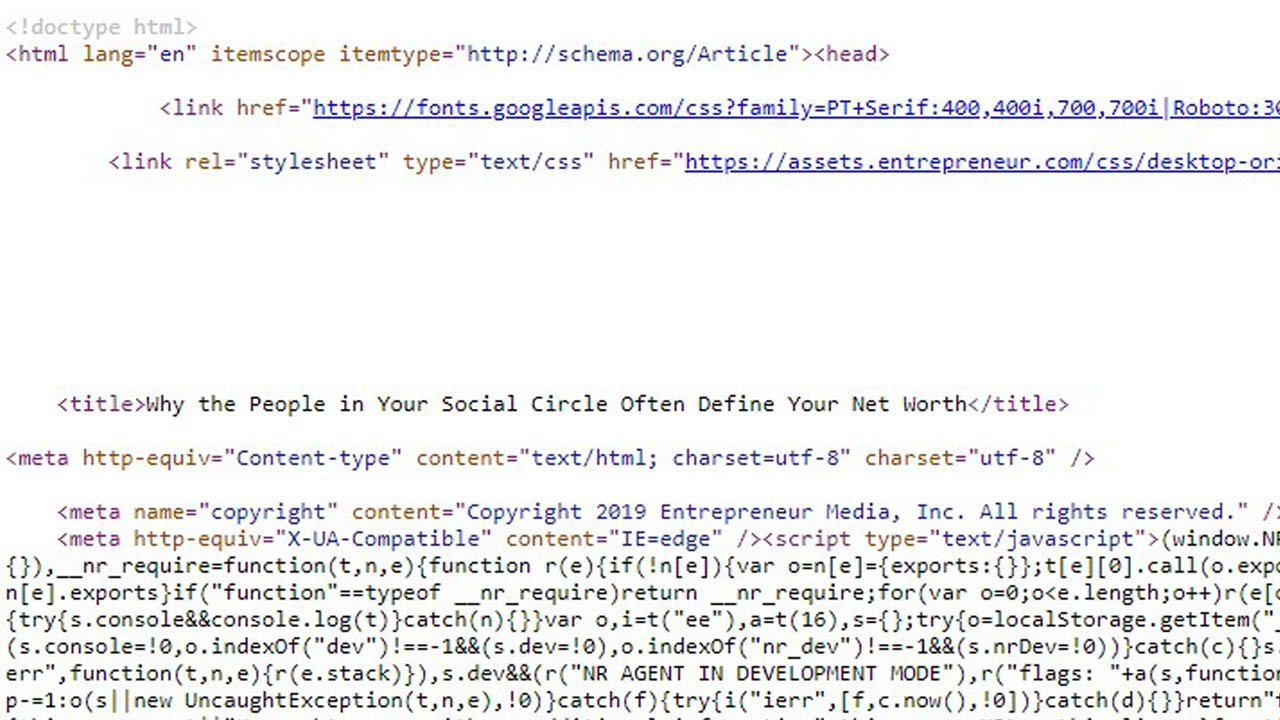
As already written, this trick does not work. On the contrary, Google recognizes this crutch and punishes the website for manipulation.
Alt image tag-SPAM
Keywords are important. After all, keywords tell Google what our article is about. But where to go with all the keywords? Webmasters are very resourceful here and like to use the old image tags to build tons of keywords into pages.
This SEO measure is quite allowed. After all, search engines can use the old image tags to read out the descriptions for the image and thus “see” the picture and assign them thematically.
But it is not allowed to stuff websites with keywords.
An anti-example: A website wants to advertise on the homepage a diet. To attract attention, a graphic was placed on the website by a slender woman. You have then added an alt-image tag “Diet” to the graphic.
Now, when a visitor visits the web page and hovers the mouse over the graphic, a dialogue window will open with the tag “Diet”.
So far so good. In this way, the image for Google makes sense, readers of the visually impaired can “read aloud” the image, and the webmaster has built an important keyword. Everything is happy.
An anti-example: Now the horses go through with the webmaster. True to the motto “more is more”, he tries to clap as many keywords as possible on the website and now complements the meta-tag as follows:
<meta name=”keywords” content= “Diet, Diet, Diet, Diet, Diet, Diet, Diet, Diet, Diet, Diet, Diet, Diet, Diet, Diet, Diet, Diet, Diet, Diet, Diet, Diet, Diet, Diet, Diet, Diet, Diet, Diet, Diet, Diet, Diet, Diet, Diet, Diet, Diet, Diet, Diet, Diet, Diet, Diet, Diet, Diet, Diet, Diet, Diet, Diet, Diet, Diet, Diet, Diet, Diet, Diet, Diet, Diet, Diet, Diet, Diet, Diet, Diet, “>
That’s ridiculous. Google does not use meta tags by frequency. As soon as Google has assigned the day “diet”, the topic is settled here.
On the contrary: Google punishes webmasters who use SPAM methods.
Title tag-SPAM
The title is what usually appears in the top left of the page. It is advisable to include the TOP keyword here.
Unfortunately, many exaggerate the use of keywords in the title. It rather diluted the effect of the keywords in excessive use. In addition, the title is displayed in the search results. For that reason alone, a title should always be chosen “sensibly”, instead of stringing together as many keywords as possible.
After all, what good is it to rank a page well if no one clicks on the search result because the title is not very meaningful – or even worse: it looks like spam?
Read Also: Master the Art of Crafting Powerful Eye-catching Headlines for Your Blog Posts
OffPage SEO measures you should avoid!
So far, we have looked at what mistakes you should avoid when optimizing a website. We talked about the on-page optimization factors that could harm your website:
- Hidden text
- Image spam
- Meta Tag spam
- Title tag spam
These are just some of the things you should avoid – but surely these mistakes are among the most popular … except (now) to you. Next, I’ll show you some of the OffPage optimization techniques that you should avoid.
Many of the SEO measures are still being actively used by websites and webmasters risk being warned by Google. But let’s take a look at a few myths before we go into details.
Read Also: The 5 Best WordPress Plugins for a Strong SEO ranking
Myths of Search Engine Optimization:
If a link from a “bad” website points to your website, your page may be penalized.
Not correct. The magic word here is a balanced link ratio. Naturally, it can always come back to “bad” links. Maybe a website you had a good backlink hooked on later and your link is now classified as “broken”.
Do not worry, Google knows all these problems and constellations. If your website has an honest backlink profile, one or two bad links will not harm you.
Links of (former) Page Rank (PR) 1 Website do not help, because Google does not show page rank anymore.
Not correct. Even if Google no longer shows the PR, this does not mean that Google does not know the data, evaluates it, and considers it in the rating.
Too many backlinks from the same domain harm your website.
Not correct. The links are not useful for your website. Google evaluates multiple links from the same web page usually as 1 link. The only thing that gets a bit tricky is getting too many links from link farms.
If you do not delete these links, then, in fact, your authority might load the site. But there is a remedy: You have to check the backlinks and delete any damaged LInks. But even more …
None of the above statements are true explanations – and the reason is simple: Anything a competitor could do to harm your website will not penalize (or reward) Google.
Otherwise, we would have the “Wild West” on the internet. If competitors could penalize other websites indirectly, then everyone would simply add the websites of the competition to some link farms – and that’s it.
Google knows that too!
The only way you could be punished by SEO action outside of your website is if you put yourself in a bad environment and even refer to bad websites there are:
- link farms
- Punished websites
- Malware-website
Now you might think it would be a pretty simple thing to stay away from such websites, right? Unfortunately, it is false!
Example:
- Take, for example, the case that I have a website and I am exchanging links with your website.
- When we exchanged the links, both websites had TOP quality. This would be an ideal link exchange.
- Okay, now several months go into the country and I’m doing all sorts of Black Hat SEO (these are forbidden practices).
- Finally, Google tired of my unfair actions and decided to delete my website from the index.
- So, now I’m suddenly in the eyes of Google, a black sharp, right? This is initially of little interest since it is not your website.
- The problem is that you could be punished with your website now that you are linking to a bad website.
For this reason, it is important to keep a close eye on his link profile. A bad link profile is (unfortunately) a common reason why sites on Google simply can not rank well. This is even more annoying because many webmasters have no idea that they have ever done anything wrong.
Read Also: 20 Common WordPress Mistakes to Avoid
Link building: Check backlinks
Incorporate link-building into your SEO checklist. Regularly assess backlinks to ensure they’re high-quality and relevant for improved search engine ranking and website authority. Is there any (easy) way to control link partners? YES, for example, the tool helps https://ahrefs.com or https://www.link-assistant.com/linkassistant/
I usually use Link Assistant. This tool is not quite so comfortable (I prefer Web services), but Link Assistant is much cheaper.
The procedure is very simple. You enter your web address in the tool, and this will then search every web page that points to your website. Afterward, the link will be rated and you will be notified of weaknesses in your profile.
Now check the criticized websites and delete the “bad” links. Finished.
Break down unnatural backlinks
As I wrote earlier, it can happen that “unnatural links” build up over time. Here you (or your SEO representative) could have bought backlinks. Maybe even a competitor has tried to harm you by buying links to your website.
The good news is, that you can also get rid of the unfair backlinks.
Of course, it makes no sense to write to hundreds of backlinks all webmasters and ask for deletion. If it is also linked to link farms, your requests will probably not be answered anyway. So how can you delete these links now?
You can “invalidate” links directly to Google.
The solution goes through Google’s Search Console. First, you have to create a list of broken links. Please check the links to your website. Go to Search Console for “Searches> Links to your website”.
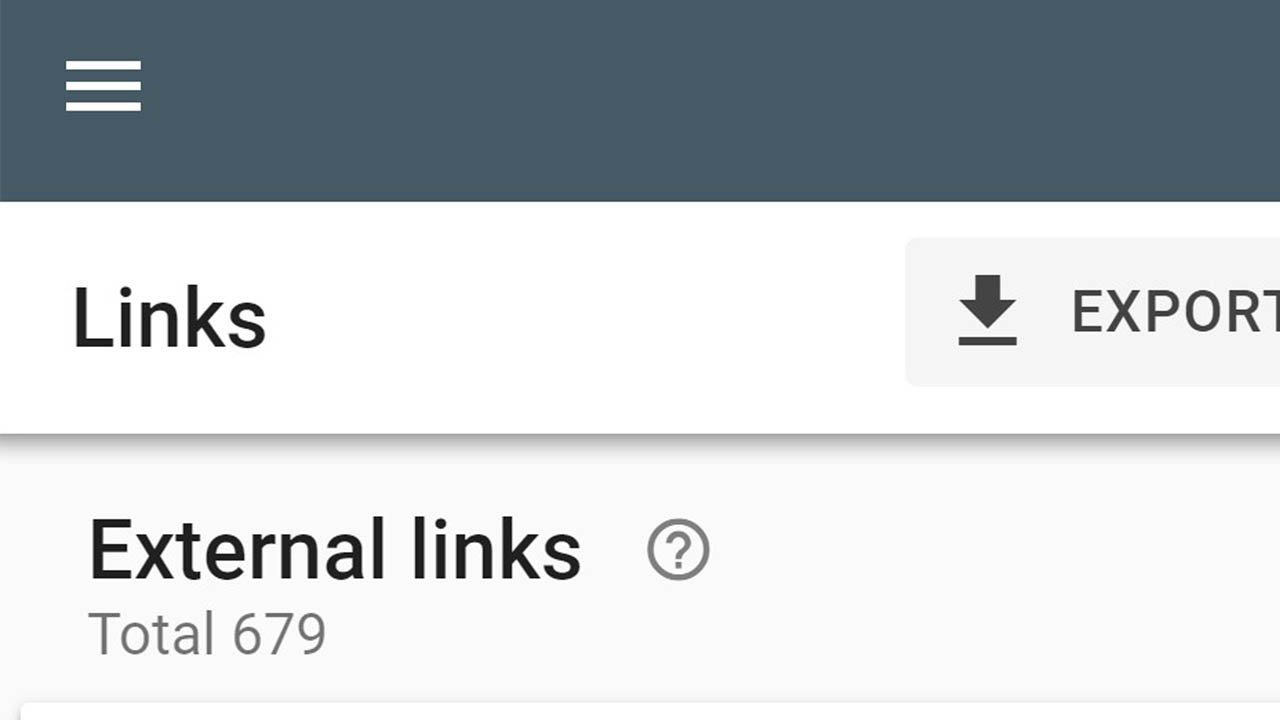
In this example, the site gets 185 links from a website. That’s weird and should be checked.
Now click on the “More” button and then on “Download more example links”.
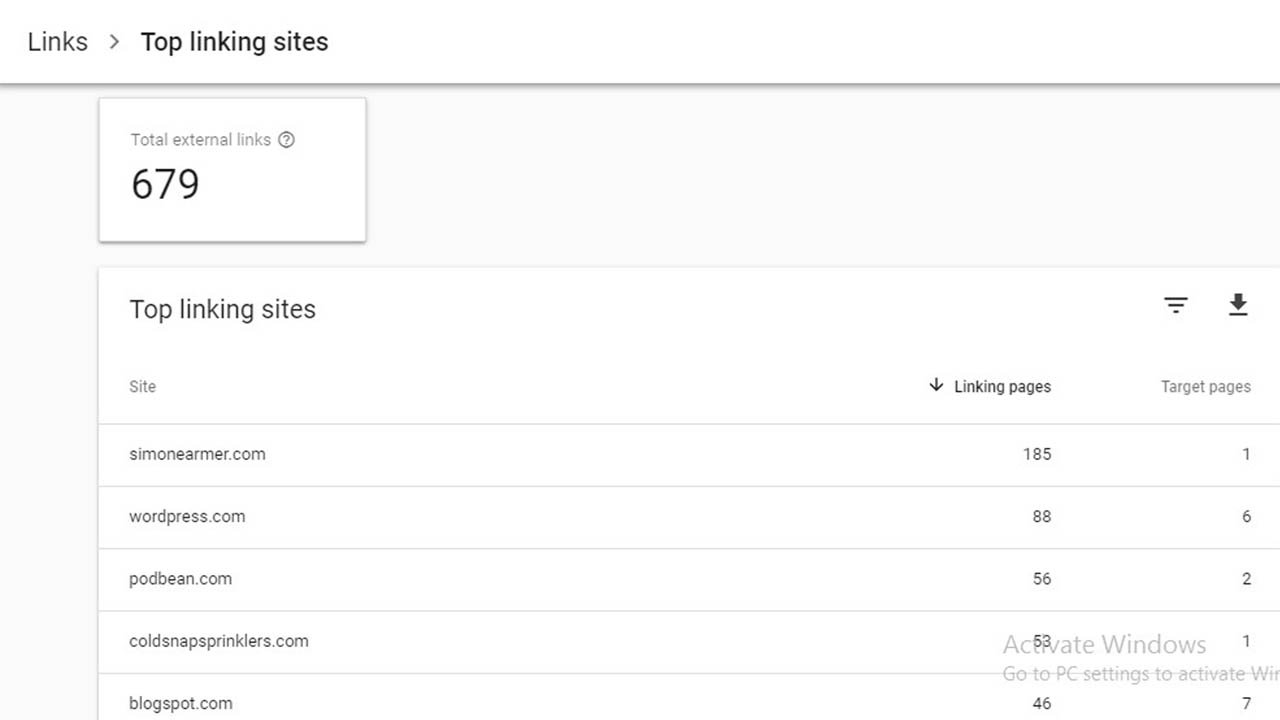
Now create a text file (TXT) in which you enter all the domains that you want to invalidate.
Example of a valid file:
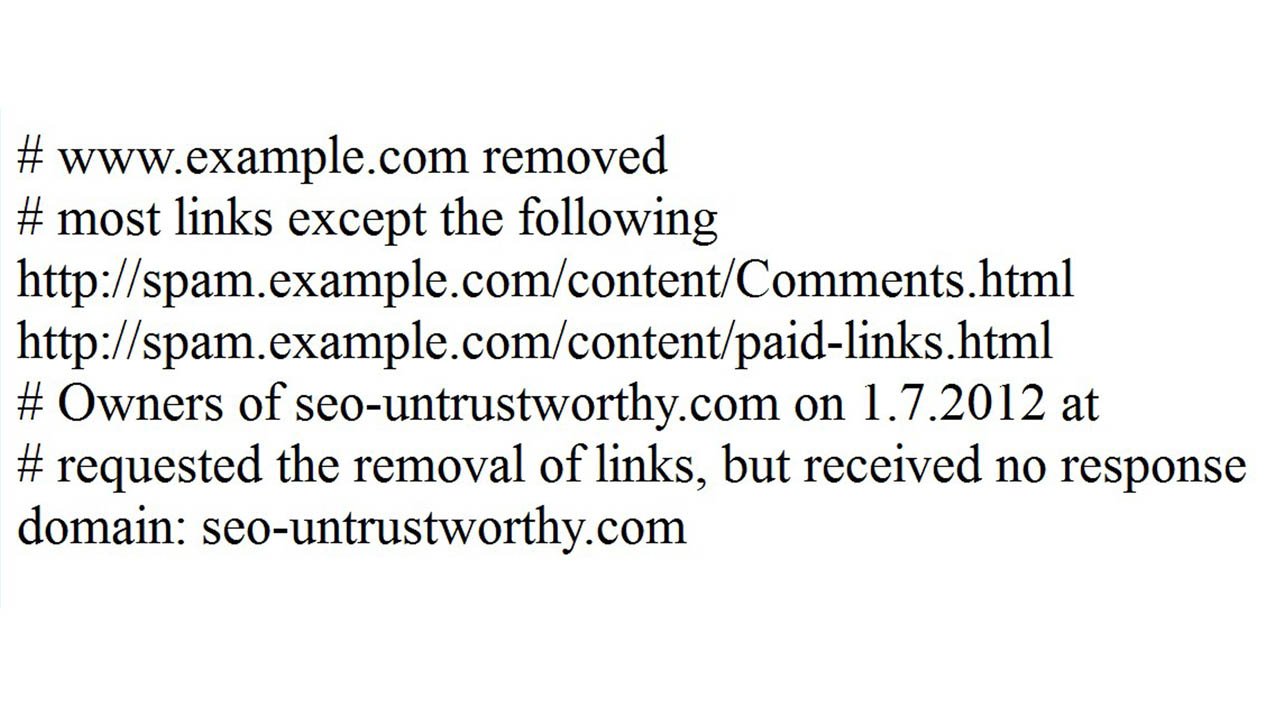
If Google should ignore all links from a domain, for example, example.com, add the line domain: example.com.
Upload the .txt file to Google’s Disavow Tool:
- Invoke the page with the Invalidate Links tool.
- Choose your website.
- Click on void links.
- Click on Choose File.
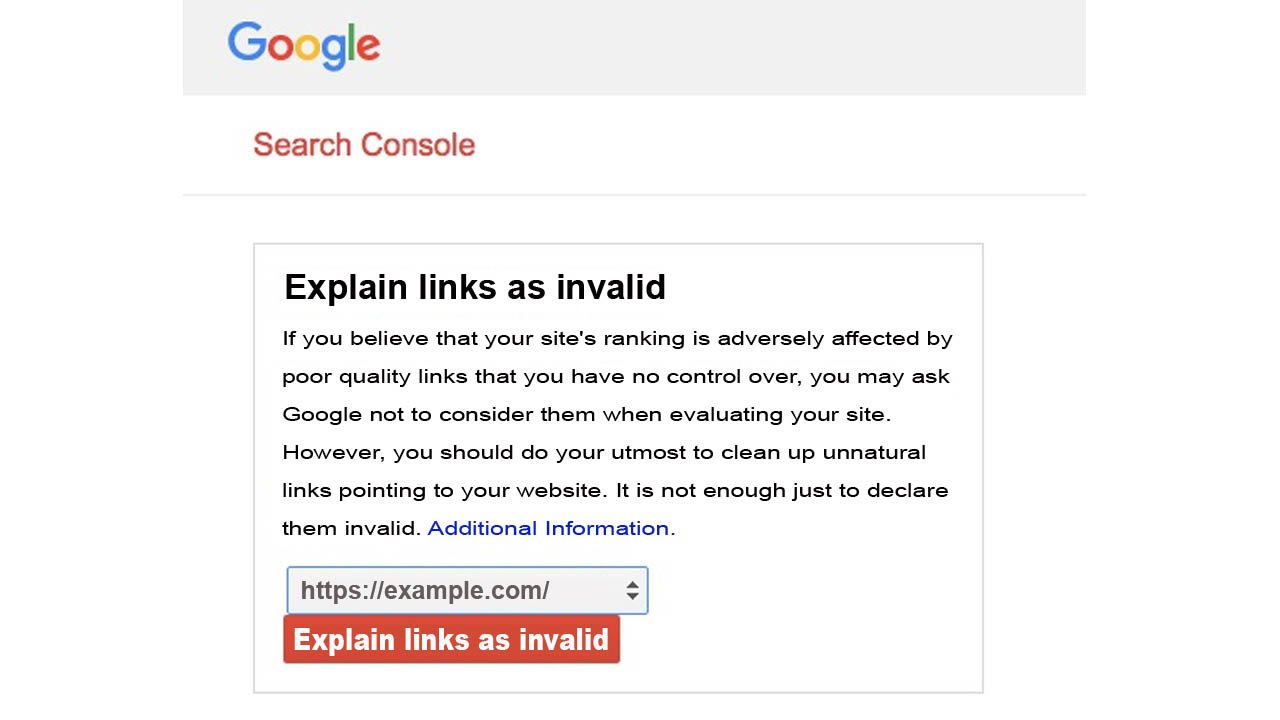
Note: Google usually recognizes itself when multiple links come from a domain. This is often not so tragic. For example, if there is a link in the footer or a sidebar, each subsequent page could generate a new link. The result is thousands of links.
However, Google does not consider these links as thousands of links but summarizes the links as best as possible. If the linking site itself is not classified as spam, your link profile will not be damaged here.
The linking site should be of “moderate” quality. Although a risk assessment of 7% does not put the website in any real danger of ranking, something nice is different. In this respect, I will clean up this site once …
Even more important note: Please use the “Disavow-Tool” only if you have classified backlinks as defective. You can damage your backlink profile if misused. Work with the utmost care!
Conclusion
I hope I was able to show you a few SEO Mistakes to Avoid – but what you’d better keep away from in the future. If you still know tricks that can backfire, please leave a comment!
QUICK TIP
There are many SEO tips and tricks. But please note that not every trick is successful in the long term. Especially unfair SEO measures, which in the short term boost the ranking, can harm your ranking in the long term.


